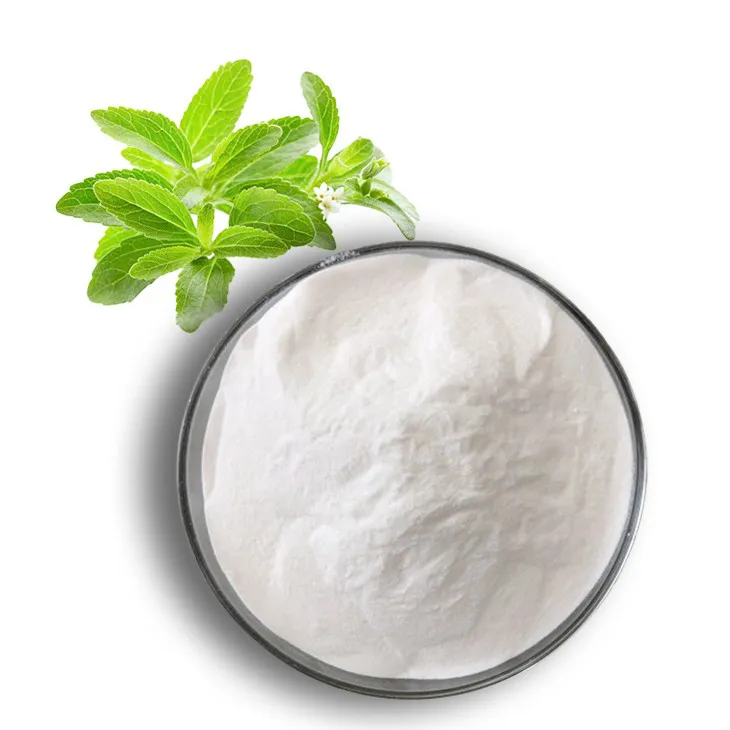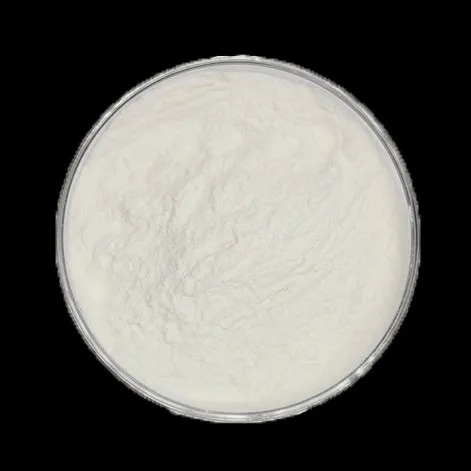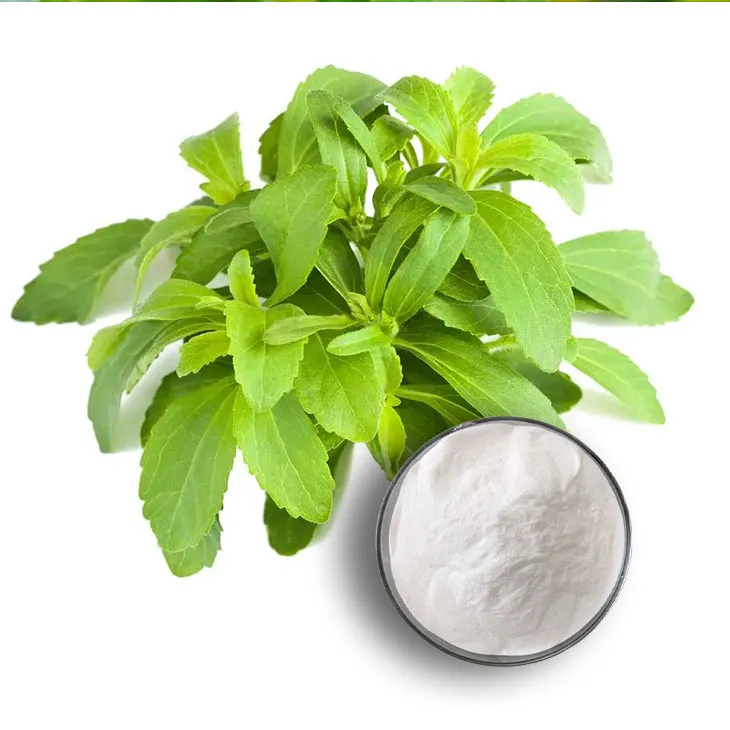- 0086-571-85302990
- sales@greenskybio.com
Organic supercritical CO₂ extraction of stevia extracts.
2024-11-30

1. Introduction to Stevia
Stevia, a natural sweetener, has been garnering increasing attention in the modern market. Originating from the Stevia rebaudiana plant, it contains sweet - tasting compounds that can be used as an alternative to traditional sugar. Stevia is known for its high - intensity sweetness while having a relatively low - calorie content. This makes it an appealing option for those who are health - conscious or have dietary restrictions, such as diabetics who need to limit their sugar intake.

2. Traditional Extraction Methods of Stevia
Traditional extraction methods of stevia have been in use for some time. These methods often involve the use of solvents such as ethanol or water - based extraction. However, these methods have certain limitations.
2.1 Solvent - Based Extraction
When using solvents like ethanol, there are potential issues. For one, the extraction process may not be as selective as desired. This means that along with the desired active components, other unwanted substances may also be extracted. Additionally, there is the need to remove the solvent completely from the final product. If not removed thoroughly, traces of the solvent can remain in the Stevia Extract, which may not be suitable for certain applications, especially in the food and pharmaceutical industries where purity standards are high.
2.2 Water - Based Extraction
Water - based extraction of stevia also has its drawbacks. It may not be as efficient in extracting the highly potent sweet - tasting compounds. Moreover, the resulting extract may have a higher water content, which can lead to issues such as microbial growth during storage and a shorter shelf - life. This requires additional processing steps to dry the extract and preserve it properly.

3. Supercritical CO₂ Extraction: An Overview
Supercritical CO₂ extraction is a relatively advanced and innovative extraction technique. CO₂, in its supercritical state, exhibits unique physical properties that make it an excellent solvent for extracting stevia.
3.1 The Supercritical State of CO₂
When CO₂ is brought to its supercritical state, it has properties that are intermediate between a gas and a liquid. It has a relatively low viscosity like a gas, which allows it to penetrate easily into the stevia plant material. At the same time, it has a density similar to that of a liquid, enabling it to dissolve a wide range of substances. The critical temperature and pressure of CO₂ are relatively easy to achieve (the critical temperature is around 31.1°C and the critical pressure is about 73.8 bar), making it practical for industrial - scale extraction operations.
3.2 Selectivity of Supercritical CO₂
One of the key advantages of supercritical CO₂ extraction is its selectivity. It can be tuned to preferentially dissolve the active components in stevia, such as stevioside and rebaudioside. This selectivity is achieved by adjusting parameters such as temperature, pressure, and the addition of co - solvents (although in the case of organic supercritical CO₂ extraction, co - solvents may not be necessary if high purity is the goal). By carefully controlling these parameters, a more refined Stevia Extract can be obtained, with a higher concentration of the desired sweet - tasting compounds and fewer impurities compared to traditional extraction methods.

4. Organic Supercritical CO₂ Extraction of Stevia
The use of organic supercritical CO₂ extraction for stevia offers several distinct benefits.
4.1 Purity of the Extract
As mentioned earlier, the selectivity of supercritical CO₂ allows for a purer Stevia Extract. The active components are more effectively isolated from the plant matrix, resulting in a product with a higher concentration of the sweet - tasting compounds. This not only enhances the sweetness intensity of the extract but also ensures that the final product has a cleaner taste profile, free from the off - flavors that may be present in extracts obtained by less - selective methods.
4.2 Environmental Friendliness
CO₂ is a non - toxic and environmentally friendly solvent. In contrast to some traditional solvents, it does not pose significant environmental risks. Moreover, CO₂ can be easily recycled in the extraction process. After the extraction is complete, the CO₂ can be depressurized and returned to its gaseous state, ready to be recompressed and reused for further extractions. This reduces the overall environmental impact of the extraction process and makes it more sustainable.
4.3 Product Quality and Safety
The purity of the stevia extract obtained through organic supercritical CO₂ extraction also has implications for product quality and safety. In the food and beverage industry, for example, a high - purity extract is desirable to ensure consistent flavor and sweetness in products. In the pharmaceutical industry, where stevia may be used as an ingredient in some medications or dietary supplements, the purity of the extract is crucial to meet strict regulatory requirements. Since supercritical CO₂ extraction can produce a clean and pure extract, it helps to ensure the safety and efficacy of products containing stevia extract.

5. Applications of the Stevia Extract Obtained by Organic Supercritical CO₂ Extraction
The stevia extract obtained through this advanced extraction method has a wide range of applications.
5.1 Food and Beverage Industry
In the food and beverage industry, stevia extract is used as a natural sweetener. It can be added to a variety of products, including soft drinks, baked goods, and confectionery. The high - purity extract obtained by supercritical CO₂ extraction is ideal for these applications as it provides a consistent level of sweetness without the need for large amounts of additional sweeteners. It also allows food and beverage manufacturers to produce products that are lower in calories while still maintaining a desirable taste. For example, in diet sodas, stevia extract can replace artificial sweeteners, appealing to consumers who are increasingly wary of synthetic additives.
5.2 Pharmaceutical Industry
In the pharmaceutical industry, stevia extract may have potential applications. It could be used as a sweetener in oral medications, especially those targeted at children or patients who have difficulty swallowing bitter - tasting drugs. The purity of the extract obtained by supercritical CO₂ extraction is important in this context to ensure that it does not interact with the active pharmaceutical ingredients and to meet the strict quality and safety standards of the industry. Additionally, stevia has been studied for its potential health - promoting properties, such as antioxidant and anti - hyperglycemic effects, which could potentially be harnessed in the development of new drugs or dietary supplements.
5.3 Cosmetic Industry
The stevia extract can also find applications in the cosmetic industry. It can be added to lip balms, lotions, and other cosmetic products as a natural sweet - smelling ingredient. Since the extract obtained by supercritical CO₂ extraction is pure, it is less likely to cause skin irritations or allergic reactions, making it a suitable choice for cosmetic formulations. Moreover, the natural origin of stevia extract may be appealing to consumers who prefer natural and organic cosmetic products.
6. Challenges and Future Prospects
While organic supercritical CO₂ extraction of stevia has many advantages, there are also some challenges that need to be addressed.
6.1 Cost of Equipment and Operation
The equipment required for supercritical CO₂ extraction is relatively expensive. The high - pressure vessels and associated control systems need to be of high quality to ensure safe and efficient operation. Additionally, the energy requirements for maintaining the supercritical state of CO₂ can be significant. This can result in higher production costs compared to some traditional extraction methods. However, as the technology continues to develop and economies of scale are achieved, the cost is expected to come down over time.
6.2 Process Optimization
Although supercritical CO₂ extraction is selective, there is still room for process optimization. Fine - tuning the extraction parameters such as temperature, pressure, and extraction time to achieve the highest yield and purity of the stevia extract requires further research. Additionally, understanding the interactions between CO₂ and the various components in stevia at the molecular level can help in developing more efficient extraction processes.
Despite these challenges, the future prospects for organic supercritical CO₂ extraction of stevia are promising. As consumer demand for natural and high - quality products continues to grow, the advantages of this extraction method, such as purity, environmental friendliness, and product safety, will become even more important. Research efforts are likely to focus on further improving the extraction process, reducing costs, and exploring new applications for the stevia extract obtained through this method.
FAQ:
What is supercritical CO₂?
Supercritical CO₂ refers to carbon dioxide in a state where it has both the properties of a gas and a liquid. It occurs when the temperature and pressure of CO₂ are above its critical point. In this state, it has a high diffusivity like a gas and a density similar to that of a liquid, which makes it an excellent solvent for extraction processes.
Why is supercritical CO₂ extraction suitable for stevia?
Supercritical CO₂ extraction is suitable for stevia because it can selectively dissolve the active components in stevia. Stevia contains various components, and this extraction method can target and isolate the desired sweet - related compounds effectively. Also, compared to traditional solvents, supercritical CO₂ is non - toxic, which is important when dealing with a product like stevia that is used in food and other consumer applications.
What are the advantages of organic supercritical CO₂ extraction of stevia extracts over traditional extraction methods?
The main advantages include obtaining a more refined and pure stevia extract. Traditional extraction methods may introduce impurities or unwanted substances. Supercritical CO₂ extraction can be more precise in isolating the active components. Additionally, as mentioned before, CO₂ is non - toxic and recyclable, making the process more environmentally friendly compared to some traditional extraction solvents that may be harmful or difficult to dispose of properly.
How pure is the stevia extract obtained by supercritical CO₂ extraction?
The purity of the stevia extract obtained by supercritical CO₂ extraction can be relatively high. Since this method can selectively dissolve the target components, it can effectively separate them from other substances in stevia. However, the exact purity may depend on various factors such as the extraction parameters (temperature, pressure, extraction time etc.). Generally, it can produce a stevia extract with a high concentration of the desired sweet - tasting compounds.
What are the potential applications of the stevia extract obtained by this method?
The stevia extract obtained by supercritical CO₂ extraction can be widely used in different fields. In the food industry, it can be used as a natural sweetener in various products such as beverages, confectionery, and baked goods. It can also be used in the pharmaceutical industry, potentially in products where a natural sweetener is needed. In addition, it can be used in the cosmetic industry in products like lip balms or mouthwashes where a sweet taste is desired.
Related literature
- Supercritical Fluid Extraction of Stevia rebaudiana Bertoni: A Review"
- "Optimization of Supercritical Carbon Dioxide Extraction of Stevia rebaudiana Bertoni for the Production of High - Quality Stevioside"
- "Supercritical CO₂ Extraction of Stevioside from Stevia Leaves: Influence of Process Parameters on Extraction Yield and Purity"
- ▶ Hesperidin
- ▶ Citrus Bioflavonoids
- ▶ Plant Extract
- ▶ lycopene
- ▶ Diosmin
- ▶ Grape seed extract
- ▶ Sea buckthorn Juice Powder
- ▶ Fruit Juice Powder
- ▶ Hops Extract
- ▶ Artichoke Extract
- ▶ Mushroom extract
- ▶ Astaxanthin
- ▶ Green Tea Extract
- ▶ Curcumin
- ▶ Horse Chestnut Extract
- ▶ Other Product
- ▶ Boswellia Serrata Extract
- ▶ Resveratrol
- ▶ Marigold Extract
- ▶ Grape Leaf Extract
- ▶ New Product
- ▶ Aminolevulinic acid
- ▶ Cranberry Extract
- ▶ Red Yeast Rice
- ▶ Red Wine Extract
-
American Ginseng Root Extract
2024-11-30
-
Eyebright Extract
2024-11-30
-
Tamarind extract powder
2024-11-30
-
Kidney Bean Extract
2024-11-30
-
Rose Hip Extract
2024-11-30
-
Acai Berry Extract
2024-11-30
-
Hesperidin
2024-11-30
-
Natural grape seed extract
2024-11-30
-
Mulberry leaf Extract
2024-11-30
-
Propolis Extract Powder
2024-11-30





















